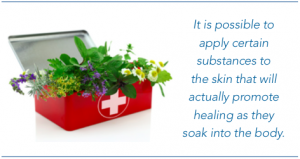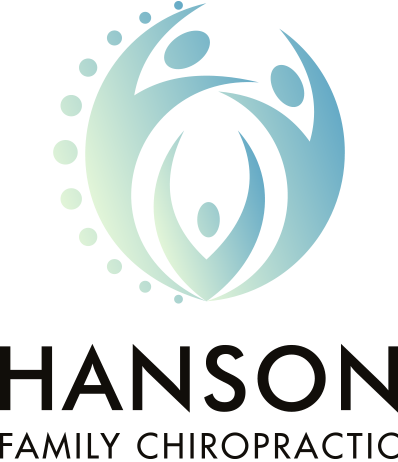Before reaching for an anti-inflammatory medication, a decongestant, or many of the other over-the-counter drugs available, Dr. Hanson would like you to consider first the chemicals used in these treatments and remember your wish for wellness.
External Healing Applications
Since the skin is the body’s largest organ and is able to respond to both internal and external stimulations, communicate sensations to the brain, protect the body, breathe and even excrete toxins, it can be an excellent source of healing for the body. It is possible to apply certain substances to the skin through poultices and compresses that will actually promote healing as they soak into the body. However, before reaching for this healing option, it’s important to know what options are recommended for each situation.
While it is best, in most instances, to use cheese cloth, organic cotton fabric, or other natural fiber, what to put in the cloth, how to apply it, and for how long is going to be dependent upon the purpose of the treatment.
Preparing the Applications
There are several ways to prepare external applications called poultices, compresses, or wraps.
A poultice, also called a cataplasm, is typically a cloth pouch that contains herbs or similar prepared ingredients with the ends folded and secured with string. It is then applied topically to the skin. It can be heated or left cold depending upon the ingredients and the purpose.
A compress is slightly different in that it isn’t a pouch containing ingredients. To use a compress start with a bowl of hot, cold, warm or room temperature water depending upon the purpose, add the applicable herbs or other ingredients, then soak the cloth in the water, wring it out and apply it to the affected area. In some cases, especially when heat is important, you’ll want to replace the cloth often, but in other instances it can be left alone or held in place with a wrap.
Finally, a wrap is similar to a compress but generally covers more area. Where a compress is going to be used in a localized area, a wrap (depending upon the purpose) can be used similar to an ACE bandage. The typical wrap will be about 2 yards long and, where warmth is important, considering using wool for the cloth and wrap the entire area.
In all of these instances, it’s best to use natural and organic cloth but any cloth will work in a pinch. This can include using wash cloths or pieces of a towel or even t-shirt for a poultice or compress as well as a wool scarf when needed for a wrap.
 Recommended Ingredients
Recommended Ingredients
Natural, organic ingredients are always recommended. Common poultice ingredients include onion, lemon, potato and ginger. The typical ingredients in a compress will include chamomile, lavender, lemon, Arnica or Calendula, depending upon the need. With regards to wraps, they can be prepared using all of the above, it is again determined by the need.
Choosing the Ingredients
Lemon is one of the first ingredients to consider due to its variety of uses including: fever, stress, watery runny nose or eyes, sore throat or tickle in the throat, allergies, bronchitis and more.
Chamomile has been known for its soothing properties but in a poultice, compress or wrap its uses can also include: chest congestion, eye inflammation, cramps (including menstrual), soothing for ear, nose and throat, upset stomach, or colic.
Onion, applied in a poultice, is most useful for colds, earaches, teething, bladder infections, swollen glands, boils, and abscesses.
Potatoes are able to draw out toxins and break up congestion which makes them useful as a poultice for the following: sore throat, cough, headache, neck pain, boils and abscesses, chilliness, and muscle pain.
